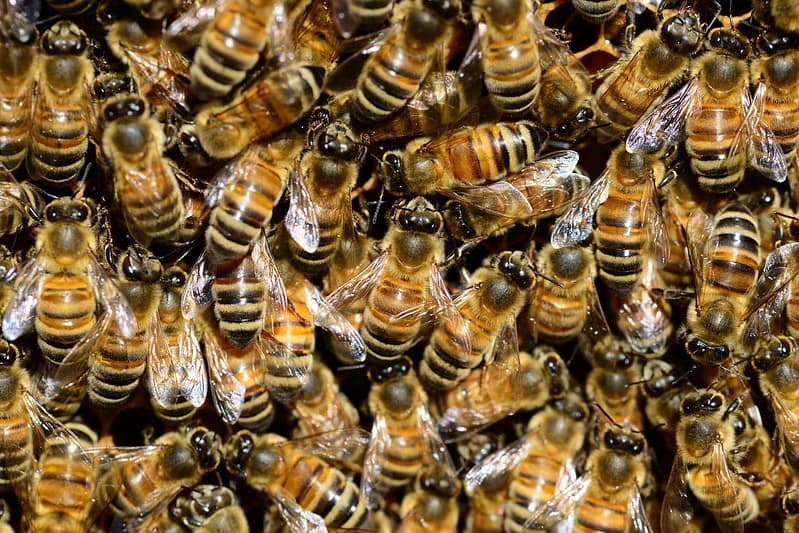How To Identify A Poisonous Insect?
If they’re small red ants, it could appear kind of cool to let a line of them crawl up your arm. They will sting you and are fire ants. Knowing how to recognize biters and stingers, as well as how to treat bites and stings in case they occur, will keep your contact with insects enjoyable rather than painful. Learn essential tips on how to identify a poisonous insect. Stay informed and protect yourself with knowledge on recognizing dangerous insects.
“Decoding Danger: A Guide on How to Identify Poisonous Insects for Your Safety and Well-being”
ANTS
Those ant fires? They have large colonies where they reside, so if you come across one, you should leave right away. As little as 1/16 inch in length, they are tiny and scarlet or reddish-orange in color. Runny fire ants will climb up your body. A sting leaves an itching place and burns like fire. Some people have allergies, causing the entire area to swell.
TREATMENT
Ice helps reduce discomfort, particularly if you have numerous stings. Seek medical attention if you develop a severe allergic reaction or reaction to fire ant stings.

BEES
A typical honeybee can only sting you once. They typically have a preference for flowers over people. Bees from Africa are distinct. They hunt, swarm, and never stop biting. The issue is that it’s difficult to distinguish between the two bees until you’re up close and using a magnifying glass.
It is not advised to dive into a lake to avoid Africanized bees. They will remain while you are submerged in water. A good move? Try to enter a building, such as a car, house, or tent.
TREATMENT
You have been stung by a honeybee. Stop it from injecting additional poison by scraping it out with the edge of a credit card or a key. It will feel better more quickly the sooner you get it out.
A harmful aspect of Africanized bees is how many times they sting. For pain relief, apply ice to a few. You should seek medical assistance if you frequently get stung or if you have an allergy.
FLIES
Around farms, horseflies are frequently observed. The bites of the females serve to fertilize and feed the eggs. The fact that they don’t travel in groups is a plus. The drawback is that they leave a significant mark because their jaws resemble small pairs of scissors.
Black flies also bite. They swarm and can completely cover you. Black flies are all-black, unlike houseflies, which have stripes on the upper section of their bodies. They frequent areas near water and feast on blood.
TREATMENT
Large and painful fly bites are possible. Ice, calamine lotion, hydrocortisone cream, and Benadryl can all be beneficial.

FLYING STINGERS
Hornets construct large, gray nests through regurgitated wood, posing a threat if disturbed. A swarm may attack, delivering painful stings simultaneously. Yellow jackets, resembling slim bees, nest underground and are aggressive. Solitary wasps sting repeatedly, while velvet ants, resembling ants but being wasps, boast red fur and a notorious “cow killer” sting. The black and white hornet inflicts the most painful stings, especially dangerous when the nest is disturbed. Understanding these distinctions is crucial for safety, as interfering with hornet or wasp habitats can lead to severe consequences, making awareness of their behaviors and appearances essential for coexistence.
TREATMENT
The stinging region can go numb from ice or cold water. To ensure you don’t experience a reaction, you should see a doctor if you’ve been stung more than a few times.
SPIDERS
It is the female black widow who bites. She is completely hairless, highly shiny black, and has a crimson hourglass on her tummy. In contrast to her broad tummy, her legs are long and slim.
Though not as much as a tarantula, brown recluses have some hair on them. It is less than an inch long, extremely swift, and retracts its legs when threatened. Because of how much the design on its back resembles a violin, it is also referred to as a fiddle back.
Although there are many more spiders, some of which bite, these are the two that Americans should be most concerned about. To make sure no spiders are hiding inside, always shake off shoes or other items left outside.
TREATMENT
As quickly as you can, visit a doctor.
CHIGGERS
Tiny mite larvae known as chiggers bite you and inject toxins under your skin. This is what gives you the worst itch. Your best course of action is to avoid grassy areas where chiggers congregate: Wear long sleeves and pants, tuck your pants into your socks, use bug repellent, keep on the hiking trail, and avoid brushing up against any plants. Take a chilly shower and wash your clothes in hot water after your hike.
TREATMENT
Applying cold, hydrocortisone cream, or calamine lotion can help relieve itching. Consult a doctor if it doesn’t go away after a week or if the bites become infected.
FIRST AID GUIDELINES FOR BITE AND STINGS
Serious reactions to bug bites and stings can result from allergies. Hives, redness, swelling, and flushing are a few symptoms of this. Anaphylactic shock, a medical emergency that makes breathing difficult, can also be brought on by bites. Carry your EpiPen if you have an allergy to stinging or biting insects (check its expiration date before an outing). With your parents and doctor, go over allergy treatment options.
A NOTE ON ICE:
Ice should never be put on your skin directly. Protect your skin from the ice by placing a layer of cloth (such a shirt or towel) between them. Ice should only be applied for 15 to 20 minutes at a time. Repetition should only be done after 20 to 30 minutes have passed and your skin has warmed to normal.
